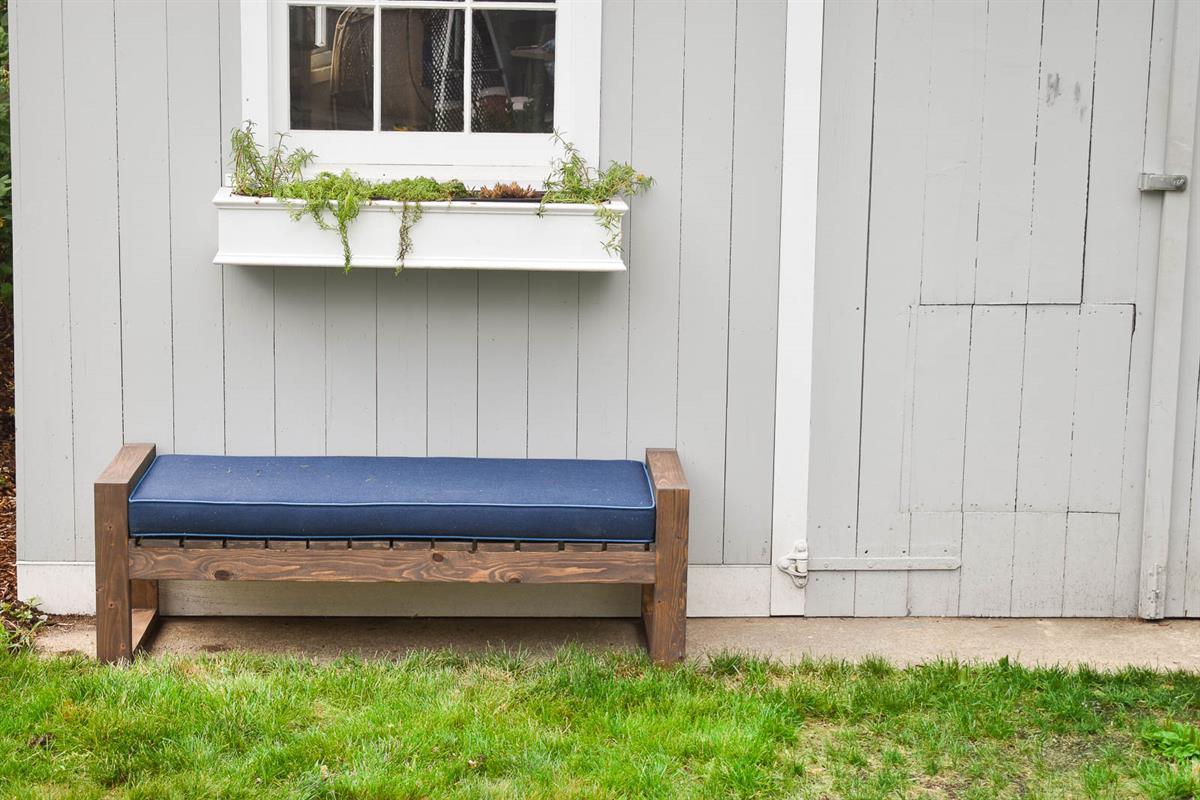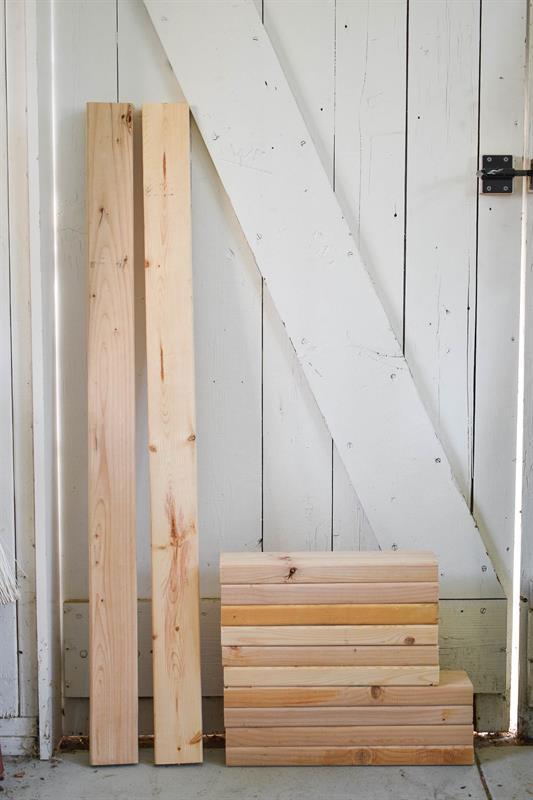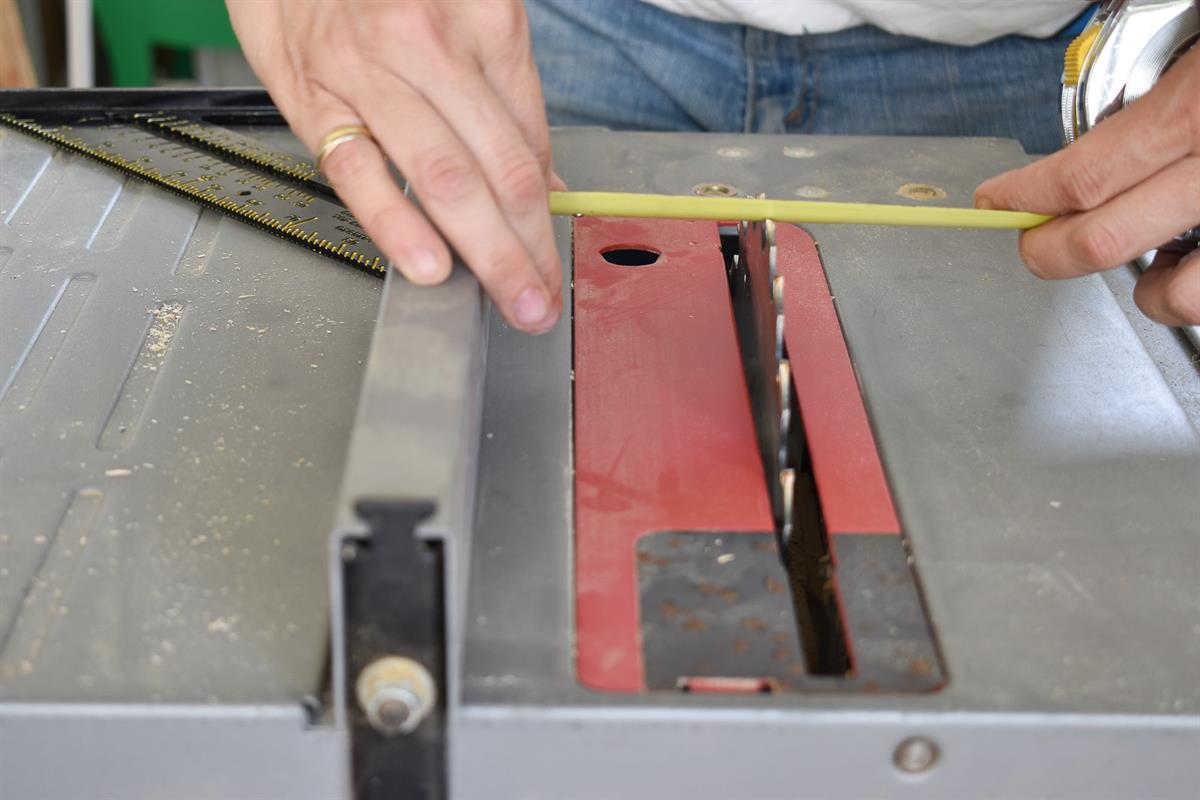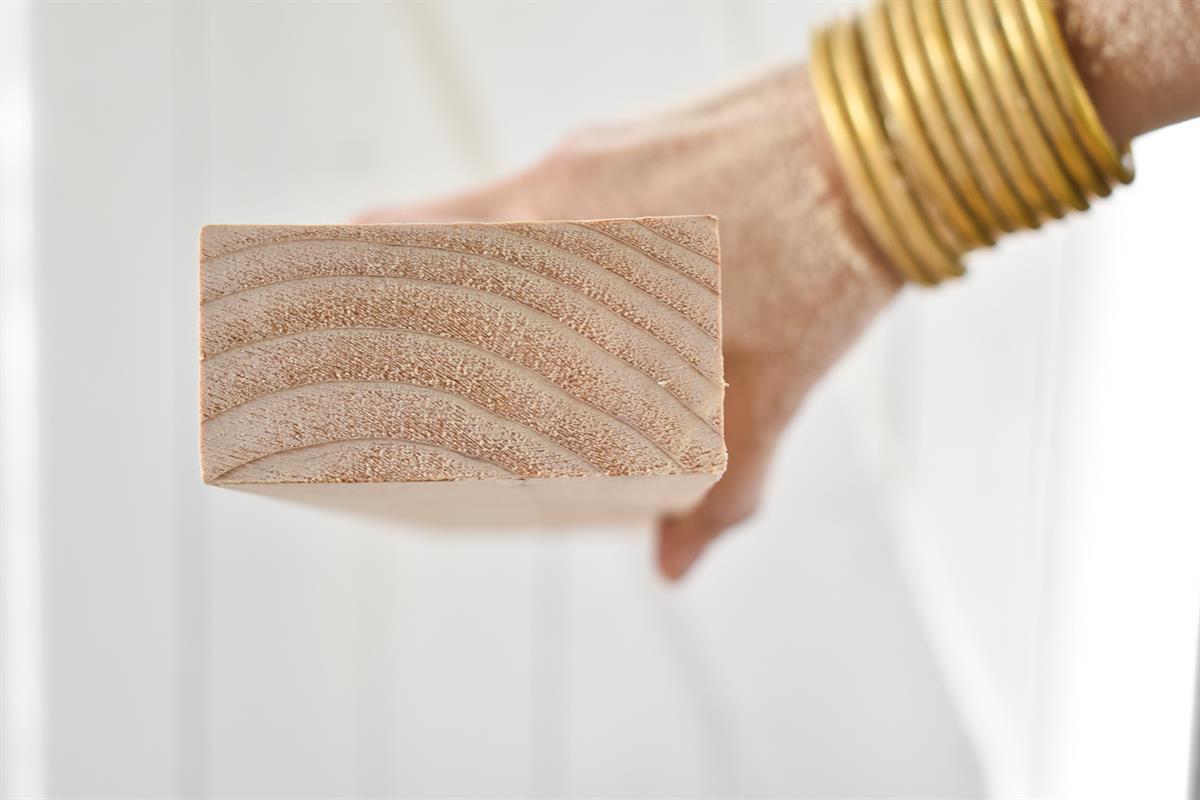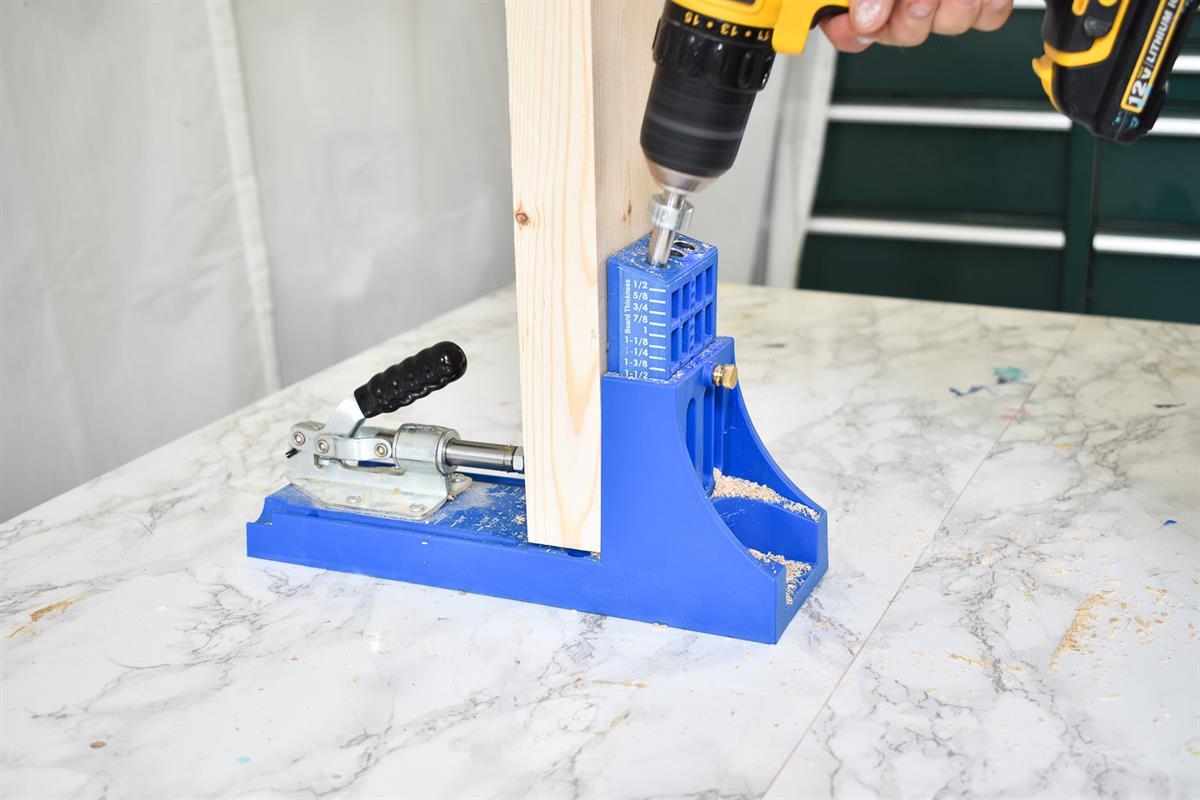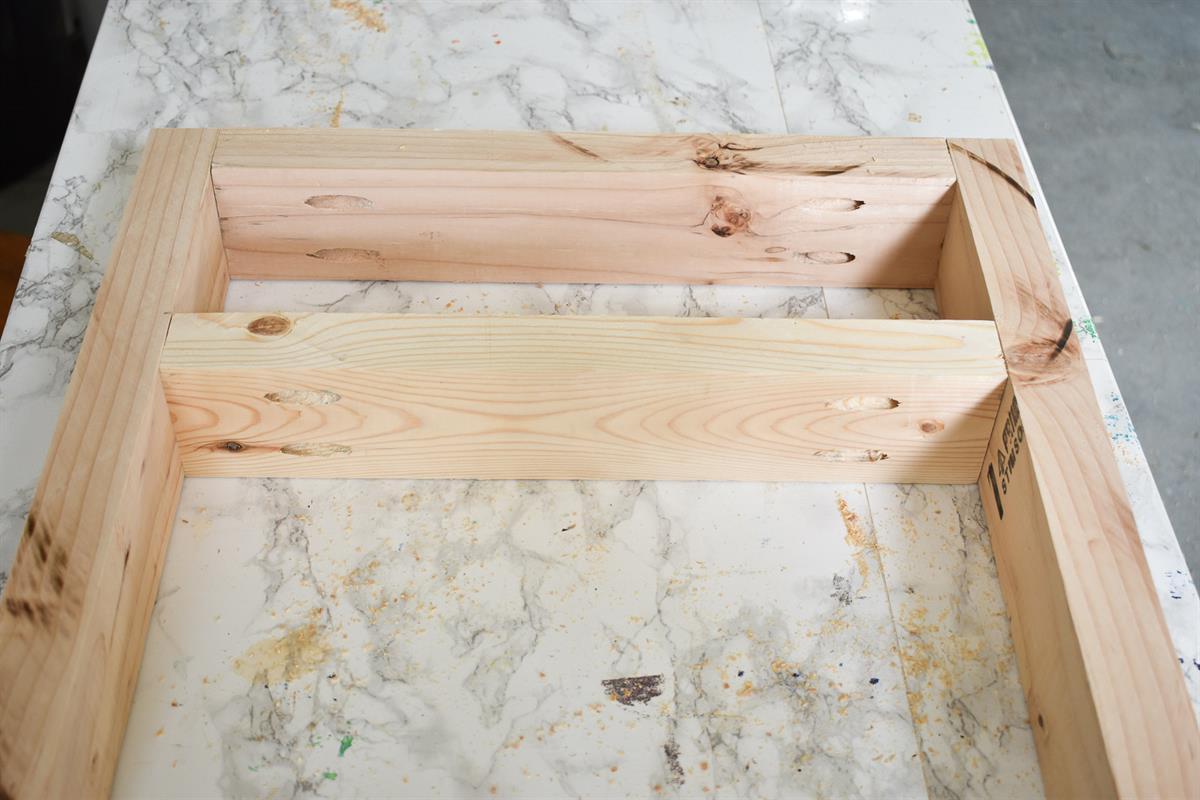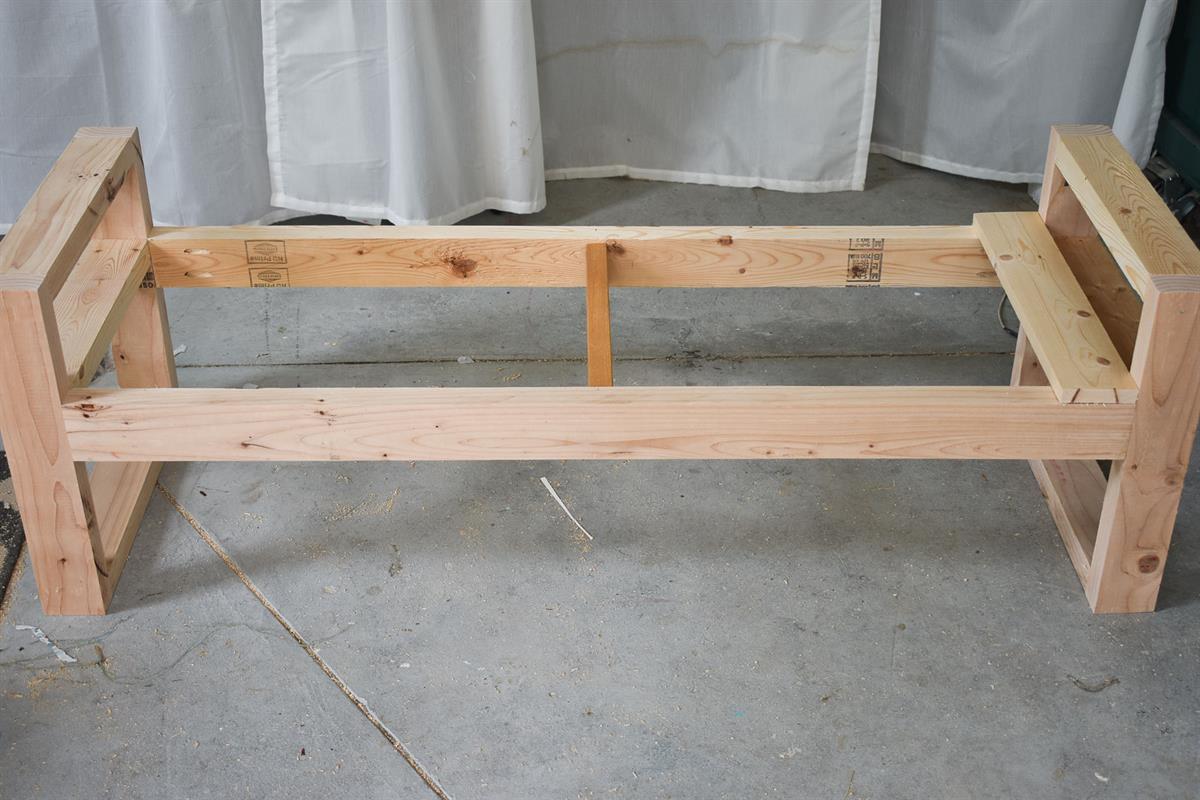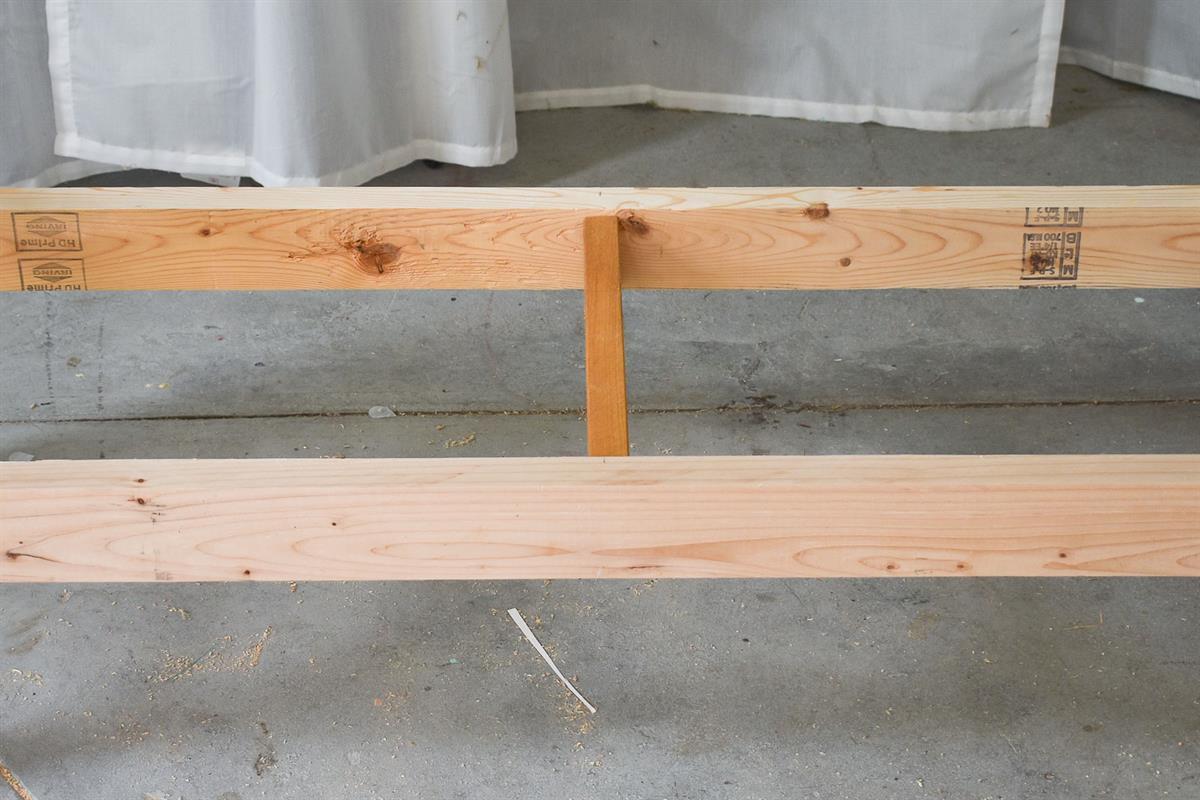Modern Backyard Garden Bench
By At Charlotte's HouseThis modern backyard garden bench is made using pocket joints and simple cuts. It provides sleek extra seating for our patio. The addition of two upholstered patio cushions means these benches are not only sturdy but also comfortable for an outdoor patio or porch.
Directions
-
Cut Lumber
Using your miter saw, cut all your lumber with 90 degree cuts. You'll end up with six 15-inch pieces of 2x4, two 48-inch pieces of 2x4, and four 16.5-inch pieces of 2x4.
-
Trim One Edge of Lumber
Check that your table saw blade is at 90 degrees, and measure 3.25-inches from the the fence. Run your lumber through the saw to remove one rounded edge of the wood.
-
Trim Second Edge of Lumber
Measure 3-inches from saw blade to the fence, and trim the opposite edge of your 2x4 leaving you with squared lumber that appears modern and clean.
-
Drill Pocket Holes
Set your pocket jig for 1 1/2 inch lumber, and make two pocket holes on either end of the shortest 15-inch lengths of wood.
-
Build Two Bench Ends
With the pocket holes on the underside of the board, use 2 1/2-inch exterior kreg screws to attach the two 16.5-inch pieces of wood to either side of the three shorter 15-inch boards.
Screw one piece aligned with the top of the 16.5-inch boards, and one piece aligned with the bottom edge of the same pair of boards. For the middle board, screw it in place so that the top edge is 12.25 inches from the floor.
Repeat these steps for the other bench end.
-
Assemble Bench
Drill two pocket holes set for 1 1/2 inches in either end of the 48-inch piece of lumber. Using 2 1/2-inch exterior Kreg screws, attach the 48-inch piece of lumber to either bench end so that it aligns with the top edge of the middle cross piece.
-
Install Cross Beam
Because this bench was a bit longer, I measured and cut a 2x4 cross beam to provide some extra support and stability. I made pocket holes in either end of my 2x4 and then screwed it in place between the longer 48-inch lengths of wood.
-
Install Support Slats
I used simple 1x4 pine to make the support slats for the bench. I cut my 1x4s to 18 inches each and dry fit them onto the bench seat. I used wood glue and a brad nailer to attach the slats to the bench frame.
I notched out the corners of the end pieces to allow for a better bit, but this is optional.
-
Sand, Stain/ Paint
Because this bench is going to be outside, I sanded the wood, applied a pre-stain conditioner, and stained the bench to match our existing patio furniture.



